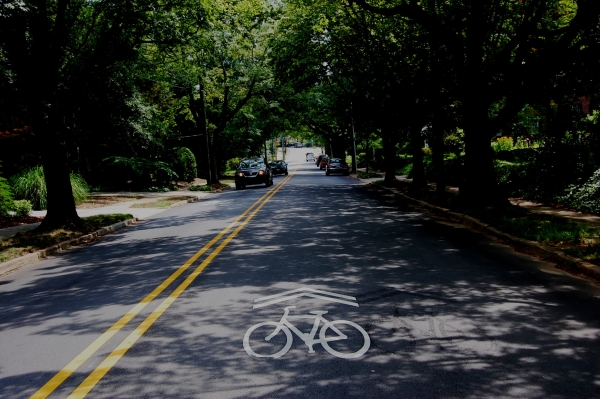Corrections appended: The original version of this article stated that the cycle lanes are four feet wide; they are five feet wide. In addition, the post misspelled Alison Carpenter’s name.
Members of the city’s bike commission want more data on the Hillsborough Street bicycle lanes before they make a final recommendation to keep them on the street or replace them with “sharrows,” or shared-lane markings.
The Bicycle and Pedestrian Advisory Commission Monday voted to keep temporary bike lanes while sharrows are added to roads around N.C. State University.
“I would like to keep these bike lanes installed until at least 75 percent of the surrounding road treatments are completed,” said Commission Chair Alan Wiggs.
Temporary bike lanes were placed on Hillsborough Street in late July. They were added to the street’s renovation plan only after residents voiced safety concerns to the city council.
In contrast to a bike lane, which separates cyclists from motorists by a solid white line, a sharrow is a large marking on the road that reminds motorists to share the road. Wiggs said as more sharrows appear on surrounding streets, the commission will have more data about how motorists are adapting to the new markings.

"Sharrows" remind motorists to share the road with bicyclists.
In the next few months, Clark Avenue, as well as Peace, Hargett and Faircloth streets will all be receiving sharrows.
“To me,” Wiggs said, “if we keep [the bike lanes] down for the extent of the trial we can then come back and make a good recommendation.”
BPAC will then recommended to city councilors whether to use sharrows or bike lanes on Hillsborough Street. Raleigh councilors will then make their own recommendation to the state DOT, which owns the street and will make the final decision.
During a recent public comment period, 45 percent of residents expressed preference for the bike lanes, while 55 percent are opposed.
“People truly love them or hate them,” said Eric Lamb, Raleigh’s transportation planner.
One item on the bike lane “con” list is the size of the lanes. Cyclists say the 5-foot-wide bike lanes put them directly in the door zone of cars parked on the street.
Of the 13 residents who attended Monday’s BPAC meeting, seven favored sharrows, while the other six preferred bike lanes.
Although unable to attend, N. C. State University Transportation’s Planner Alison Carpenter sent a statement endorsing sharrows. Lamb said the Raleigh Office of Transportation also supports sharrow use.
Since the bike lanes’ installation, only one incident has been reported. Lamb said a cyclist hit a parked car while swerving to avoid another cyclist, who was crossing the street.
